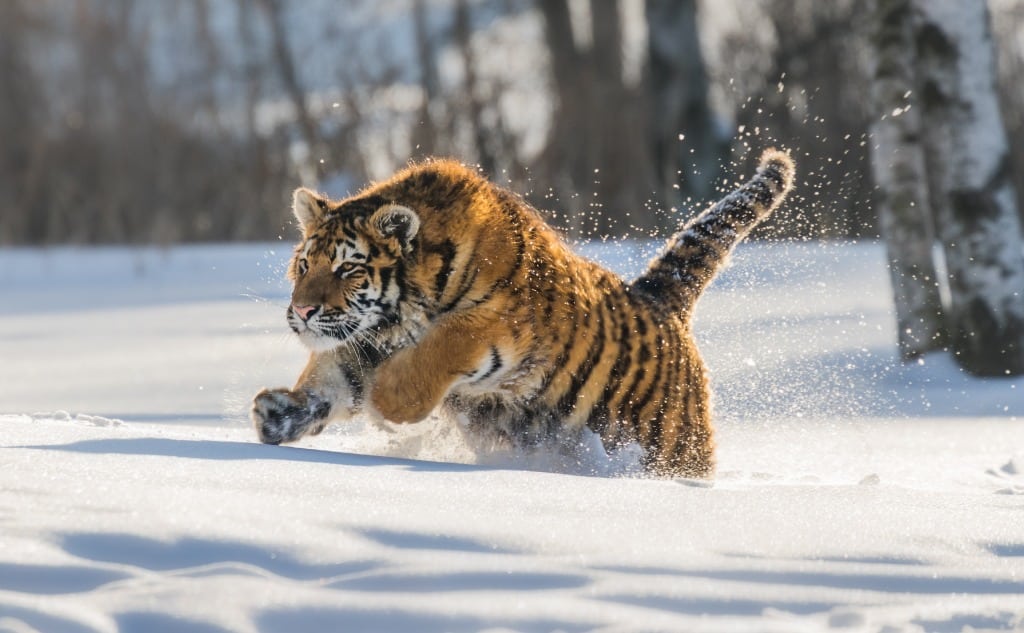Here’s who wins in a fight between a Siberian tiger and a polar bear:
The bear is at an advantage in terms of power, jaw strength, and skin thickness.
The tiger, however, is the best of all in terms of speed, maneuverability, hunting experience, and behavior.
In a fight between a polar bear and a Siberian tiger, the tiger may have an edge.
If you want to learn all about who wins in a fight between a Siberian tiger and a polar bear, then you’re in the right place.
Let’s jump right!
Fight Between a Siberian Tiger and a Polar Bear?
Ever heard the name “Amur tiger,” “Manchurian tiger” (not chicken-Manchurian), “Korean tiger,” or Ussurian tiger?
These are synonyms for the Siberian tiger, Panthera tigris, the largest of all tigers and the largest of all cats.
Named after the 10th longest river in the world (Amur River), Siberian tigers are the remnants of their closest genetic cousins, the Caspian tigers, which have gone extinct.
Now imagine that the largest of the cats has to fight with the largest of the bears, the mighty polar bear, obviously not in the boxing ring, but till death as both the combatants are the apex predators and lie at the top of their respective food chains.
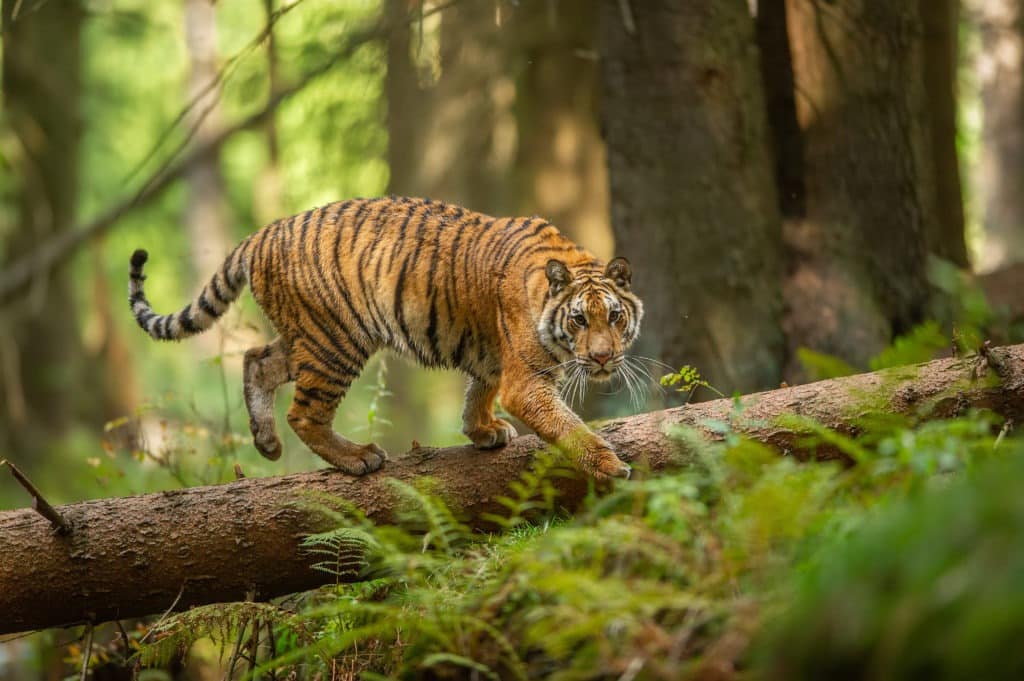
Who will win this deadly fight is an obvious question that needs a logical answer.
Before getting into the details of the fight between the Siberian tiger and polar bear, let us know both animals.
What Are the Habitats of Siberian Tigers and Polar Bears?
Siberian tigers (Panthera tigris altaica) are an endangered subspecies of tigers with less than a thousand Siberian tigers left in Southern Russia, Northern parts of China, and some parts of North Korea.
Their habitat is a beautiful merger of two forest types; temperate broadleaf and mixed forest and Taiga, characterized by a variety of trees, small and large peaks, and many different types of prey animals along with a minimum influence by humans.
Polar bears are found on and around the Arctic ring of life in the US, Canada, Russia, and some islands of Norway.
Polar bears are actually sea mammals as they spend most of their lives on the sea ice and depend primarily on the frozen layers of the ice for their favorite food; seals.
Although they travel on land, they spend most of their lives dwelling on the frozen sea ice, looking for their prey.
It is also noteworthy that polar bears have diverged from populations of brown bears separated from the rest of the brown bears in eastern Siberia.
What Are the Physical Features of Siberian Tigers and Polar Bears?
There is no easy comparison between Siberian tigers and polar bears concerning physical features except that both are exclusively carnivores.
Their bodies are adapted to digest only meat.
Size of a Siberian Tiger and Polar Bear
Siberian tigers are the heaviest of all big cats, and their weights range between 397-674 lbs (180-306 kg) for males and 220-368 lbs (100-167 kg) for females.
The body length of the Siberian tiger is 77 inches (195 cm), and 69 inches (175 cm) for males and females, respectively, excluding the tail of 99 cm and shoulder height is 30-42 inches (76-106 cm).
Polar bears are bulky and have twice the size of Siberian tigers.
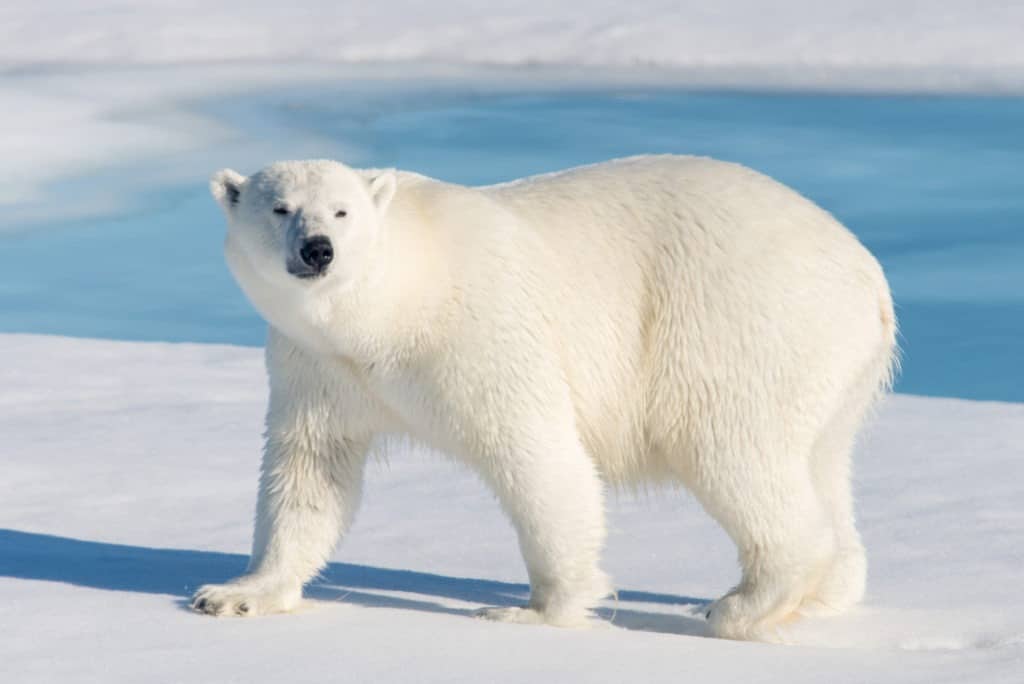
Adult male polar bear weighs 772-1543 lbs (350-700 kg), and total body length is about 94-118 inches (239-300 cm).
Even the adult female polar bears weighing 331-551 lbs (150-250 kg) and longing 71-94 inches (180-239 cm), almost half of their male counterparts, are heavier and larger than adult Siberian tigers.
Shape of a Siberian Tiger and Polar Bear
Siberian tigers have beautiful, lean, and stout builds. They have broad skulls of 13-15 inches (33- 38 cm) and wide jaws.
The whiskers and long fur around the face and neck make it even wider and broader.
Moreover, the other prominences of the face and skull appear greater than all other big cats.
The female is smaller and shorter than the male.
Tigers have fewer (only 30) but stronger teeth, and their canines are 2.5-3 inches (6.35-7.6 cm) in length.
Polar bears have bulky builds, long narrow skulls to help catch seals, stocky legs, small ears, and a very short tail.
Their feet are adapted to swimming and walking on slippery ice. They can use their front paws as paddles and back legs as a rudder, and their feet are slightly webbed to help them propel the water.
Their claws are stocky, thick, non-retractile, and curved to dig in the ice and hold their bulky prey.
Also, their feet have papillae (projections) that create friction on the ice.
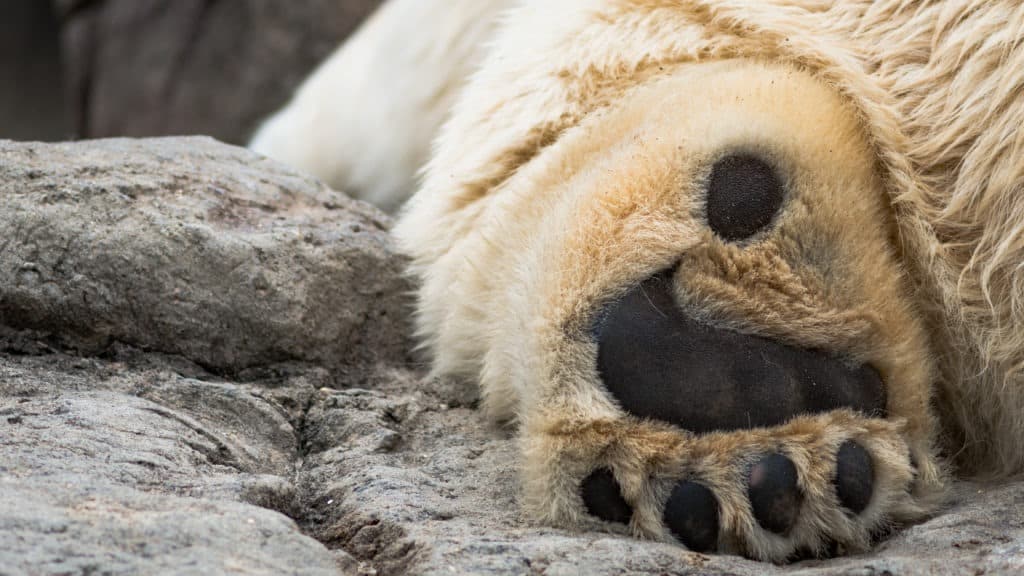
Polar bears have 42 teeth, and their canines are larger than Siberian tigers.
They have a thick layer (up to 4 inches or 10 cm) of fatty deposits in their hides to provide insulation.
Colors and Pattern of a Siberian Tiger and Polar Bear
The fur color of the Siberian tiger is a pale yellow to rusty color and varies according to the seasonal temperature.
They have a moderately thick double layer of fur, coarse during summer and soft and long during winter.
Siberian tigers have dark brown to black vertical stripes, which are specific to each tiger.
The polar bear also has a double layer of fur, a thick undercoat, and long guard hair above that are transparent and appear white that turns yellow with age.
They have dark skin that can be seen only at the nose and absorbs light to keep them warm in a freezing icy environment.
The hairs on the forelegs are exceptionally long and give a bulky appearance.
Diet of a Siberian Tiger and Polar Bear
Both Siberian tigers and Polar bears are exclusive carnivores and are apex predators of their respective food chains, but their chains are different.
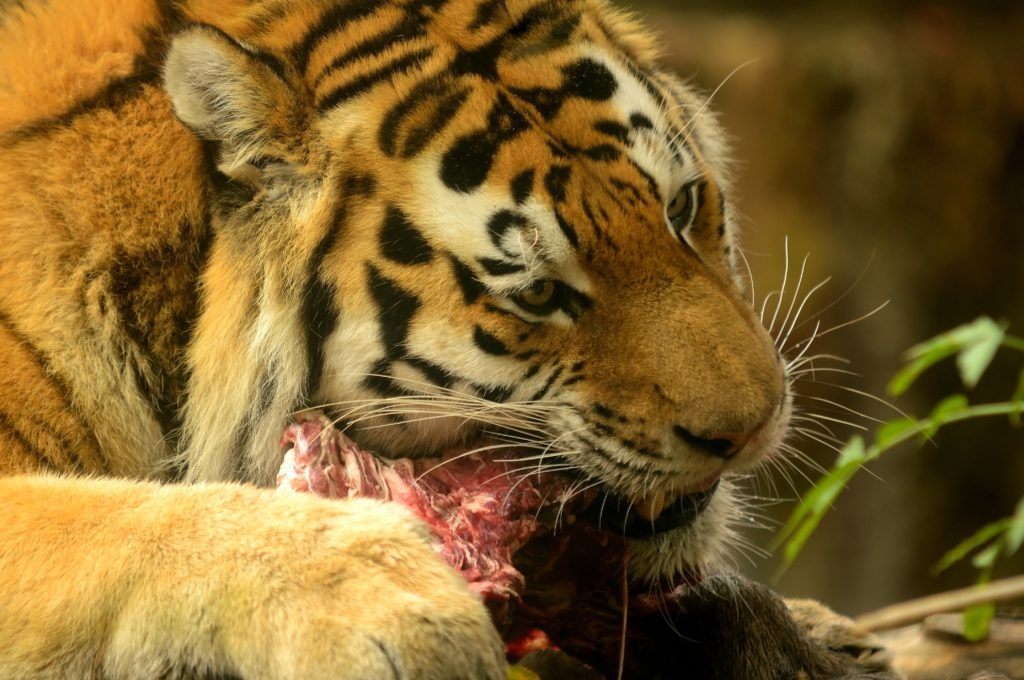
Siberian tigers prey upon various animals in their niche, from large animals such as wapiti, musk deer, and wild boar to smaller ones like hares, rabbits, and salmons.
2-3% of the diet of Siberian tigers also consists of brown and Asiatic black bears.
On the other hand, Polar bears dominate in the extremely cold environment of the Arctic, where they prey mostly upon seals though they are flexible hunters if other species are available.
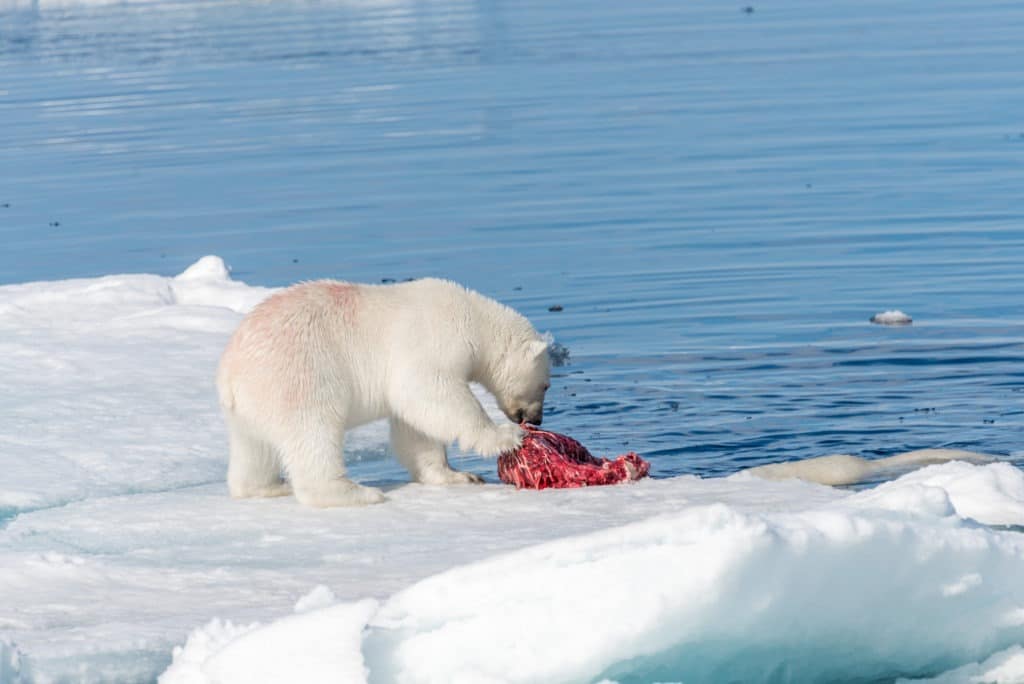
They wait for seals to appear at their breathing holes in the ice and then attack them by scooping them out and crushing their jaws.
Reproduction of a Siberian Tiger and Polar Bear
Siberian tigers can reproduce throughout the year, and their reproduction is moderately affected by the season, but the peak mating season is usually in Nov-April.
Male and female tigers join only for mating.
The gestation period is 90-93 days, and 2-4 cubs are produced.
The tiger cubs are left alone when a female goes out hunting, making them vulnerable to attack.
Polar bears mate on the ice, and one female mate many males simultaneously for weeks.
The cubs in the same litter may have different fathers since the female may mate with multiple males in a short period of time.
During gestation, the females gain much weight and enter a hibernation-like (not true hibernation) state in their self-dig dens.
On average, two cubs are produced in one litter.
Behavior of a Siberian Tiger and Polar Bear
Like other big cats, Siberian tigers are solitary and territorial.
They occupy a large territory and tend to protect it at any cost.
They make families only during the breeding season, and tigresses are responsible for the nourishment and protection of cubs.
Like Siberian tigers, Polar bears are also solitary mammals.
Sometimes males join each other and live together for a shorter period.
Polar bears are not territorial and mostly fight for mating rights.
What Is the Probability of a Fight Between a Siberian Tiger and a Polar Bear?
The habitat of both species is different, and only one of them (the tiger) is territorial.
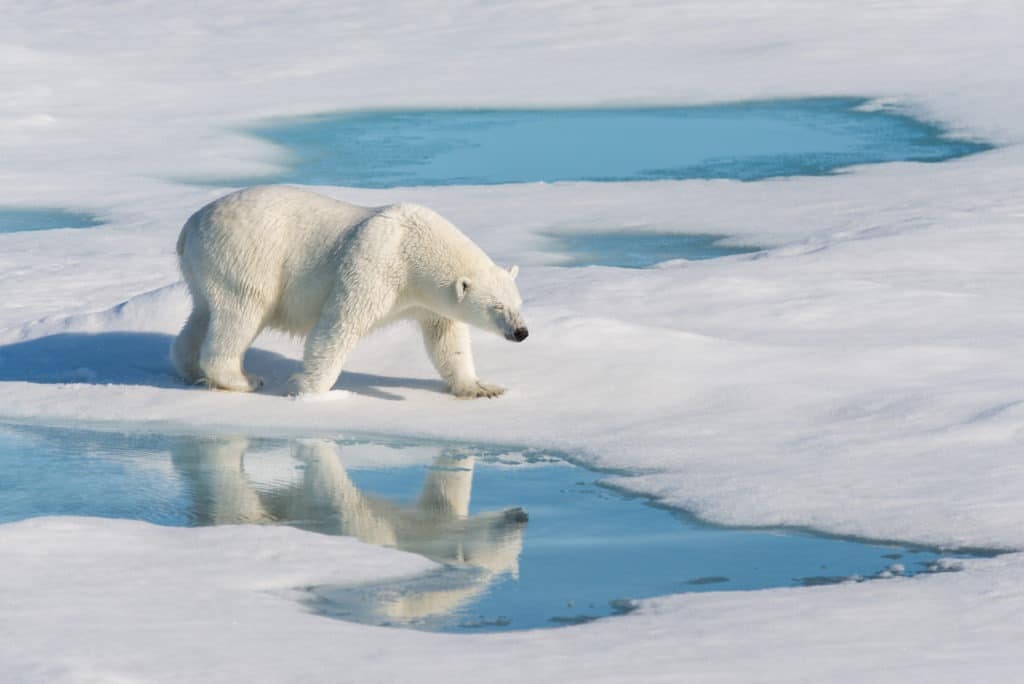
So there are fewer chances of them confronting each other and even rarer chances of charging on each other.
The fight between a Siberian tiger and a polar bear would therefore be a hypothetical one only.
I will now discuss the theoretical probability of winning both species by enlisting some of the abilities needed for a victorious fight and judging both the Siberian tiger and the Polar bear on those traits.
In the end, the candidate that has more of these properties would be a winner of the hypothetical fight.
What Are the Properties Needed for a Victorious Fighter?
Here are a few of the qualities needed to get the upper hand:
Power and Jaw Strength of a Siberian Tiger and Polar Bear
Tigers are extremely powerful animals blessed with a strong biting force of 1000 psi (4450 Newton), almost 10 times that of a human male.
They can crush any skull entering their mouth.
Their strong muscular bodies are capable of leaping up to 6 meters, and they can jump up to 5 meters.
This body and jaw strength make them extremely dangerous and invincible.
In the habitat of the Siberian tiger, i.e., Taiga, the only animal that can challenge the tiger in strength is a fully grown brown bear.
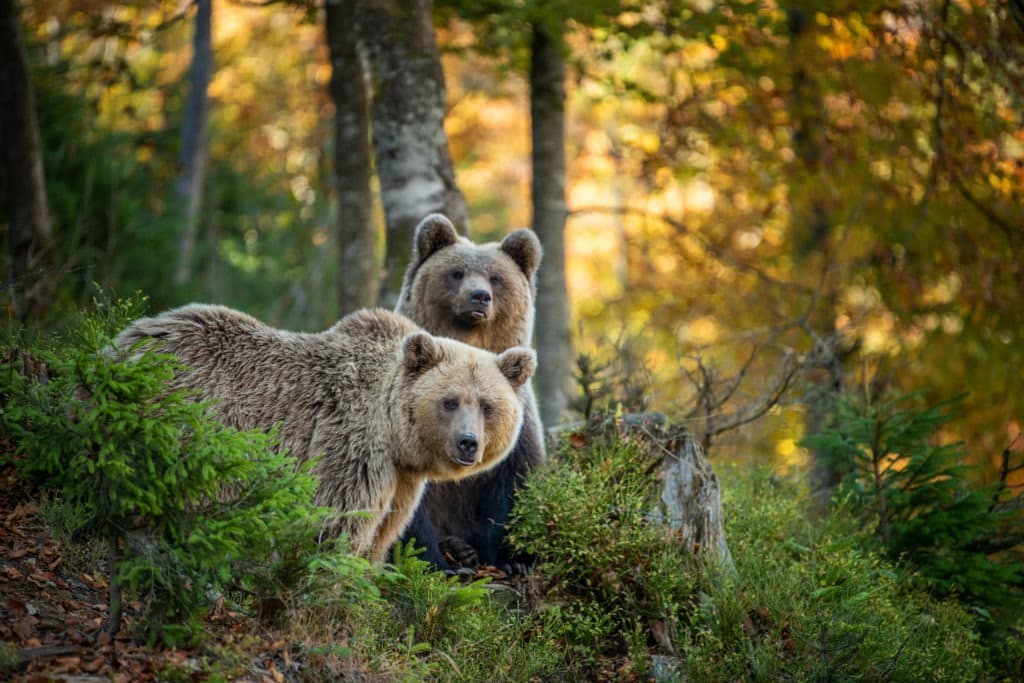
Tiger usually avoids the male brown bears and hunt cubs or females.
Polar bears, on the other hand, are larger and bulkier than brown bears.
They have a jaw strength of 1235 psi (520 psi is enough to crush a human skull) and have a biting force more than sharks, but they can open their jaws less than a tiger.
They are the strongest canids on the planet.
They have twice the weight of Siberian tigers and obviously will have more muscular power than them.
Still, that power is necessary to support and move their bulky bodies rather than for attacking.
Defense Mechanisms of a Siberian Tiger and Polar Bear
Both Siberian tigers and polar bears have a double layer of fur, but the bear’s coat is thicker.
The bear has a thicker neck and also has thick layers of subcutaneous fat that make it hard to penetrate.
So a tiger’s method of killing its prey (strangling with a firm grip on the neck) would not be very effective here.
The tiger’s skin is not that fatty and is easy to penetrate.
But its skull is broader and wide, making it difficult for the bear to bite down on its skull (the favorite method of a bear to kill seals).
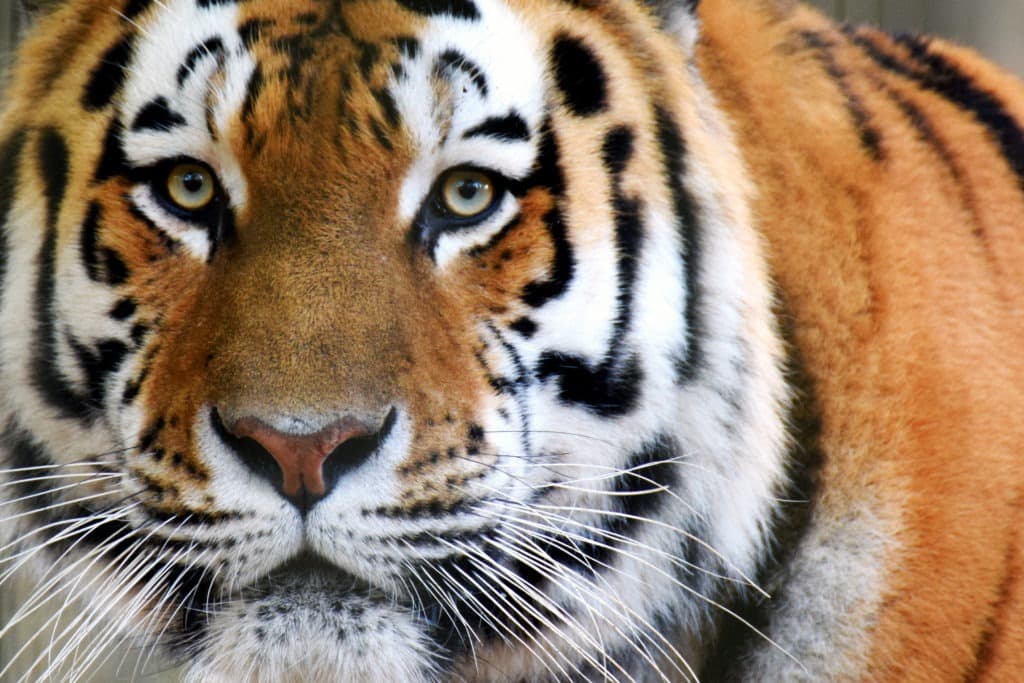
So in defense mechanisms, both species are almost equal as the favorite killing method of a tiger, i.e., polar bear’s thick skin defends neck bite, and the favorite killing method of a polar bear, i.e., the skull-crushing bite, is defended by tiger’s agility and broader skull.
Attacking Tools of a Siberian Tiger and Polar Bear
The Siberian tiger’s attacking tools are its strong teeth, heavy biting force, and razor-sharp claws.
These tools are enough to kill anything from bear to elephant, assuming the right strategies are used.
The polar bear’s attacking tools are their strong, non-retractile claws that are used to hold their prey but that are not as sharp as those of tigers and the strong jaws with their heavy biting force.
So, with regard to attacking tools, the tiger is at an advantage.
Attacking Behavior and Hunting Experience of a Siberian Tiger and Polar Bear
Although polar bears are the only bear species famous for attacking humans, tigers’ hunting experience and attacking behavior are far more versatile than bears.
Despite the fact that both species are exclusive carnivores, the diversity of a tiger’s prey is greater than the bear’s.
A polar bear spends half of its life in hunting, but only 2% of the attacks are successful compared to 10% success rate of the tiger.
The aggression in the tiger’s voice during a fight will be far more than that of a bear.
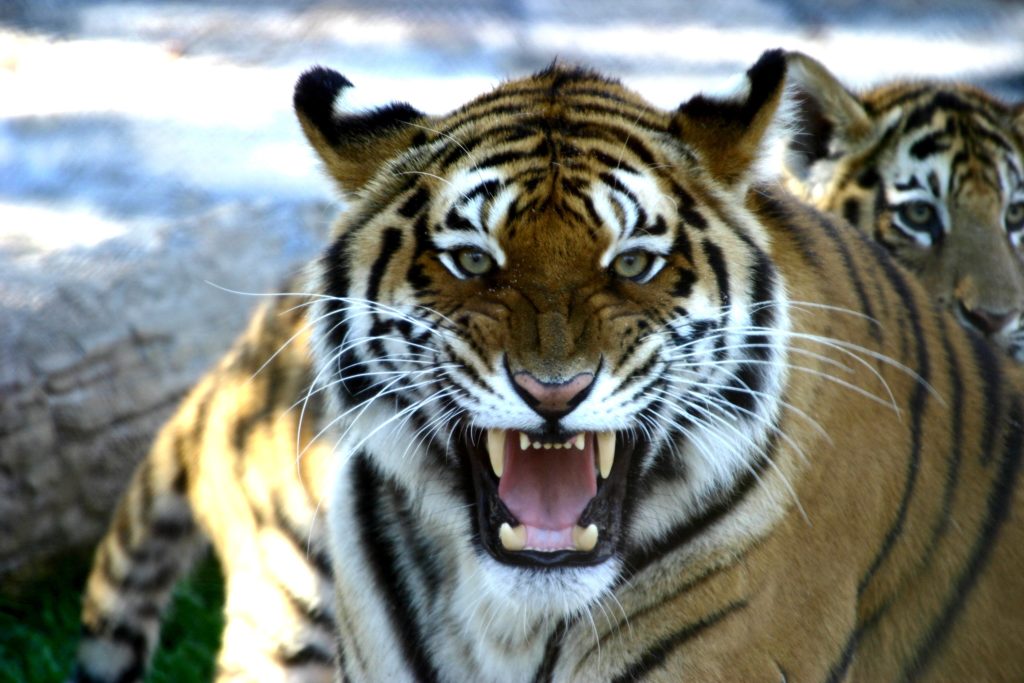
Tigers have also been reported to attack brown and black bears, and 2% of their diet consists of them.
Brown bears are closely related to polar bears and can even interbreed to produce hybrids.
This aggression, hunting behavior, and experience of the tiger give it another unique advantage.
Stealth and Camouflage of a Siberian Tiger and Polar Bear
As we all know, camouflage and sudden attacks are the two most upsetting strategies of a tiger.
But here, this ambush strategy may not work effectively.
This is because the polar bear can smell its prey or other species at a distance of more than 1500 meters.
In the hypothetical fight, a polar bear may be better camouflaged in the frozen icy environment than a tiger, whereas the tiger could be exposed due to its color.
The chances of a polar bear coming to the tiger’s habitat are lower because they spend most of their time on sea ice.
Maneuverability and Speed of a Siberian Tiger and Polar Bear
Here in the domain of speed and maneuverability, there is no match at all.
Tigers can run at 49-65 km/h and easily surpass the slow-running polar bear with a maximum speed of 40 km/h.
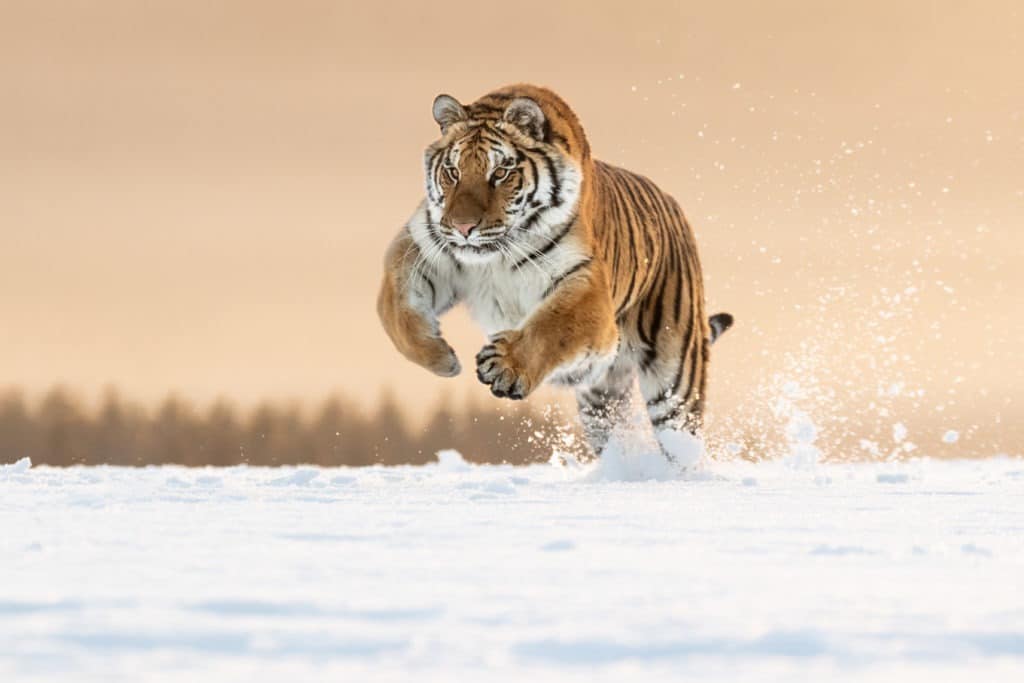
As we all know, the element of maneuverability has a great value.
The tiger can move faster and show rapid maneuvers, and the polar bear is sluggish due to being such a heavyweight.
Intelligence of a Siberian Tiger and Polar Bear
Polar bears are intelligent and smart.
They can perform difficult tasks, e.g., search for seal holes in the ice where seals breathe and wait for their prey for hours. They also repeatedly slide on the ice just for fun.
They can also swim through patches of the ice and hold their breath in the water for minutes.
Their brain size is almost double that of the tiger.
On the other hand, tigers are the most intelligent among all kinds of cats.
They are smart hunters and very intelligent animals due largely to generations of experience hunting a versatile group of prey animals.
Their hunting success in the evolutionary process is remarkable, and they have more honed instincts for fighting and hunting.
So in terms of intelligence, but tigers have a slight edge, having more adaptability than the largely seal-focused polar bear.
Stamina of a Siberian Tiger and Polar Bear
Tigers are not good in long chases.
They sneak near their prey and suddenly attack.
Polar bears also cannot fight for long in a warm environment.
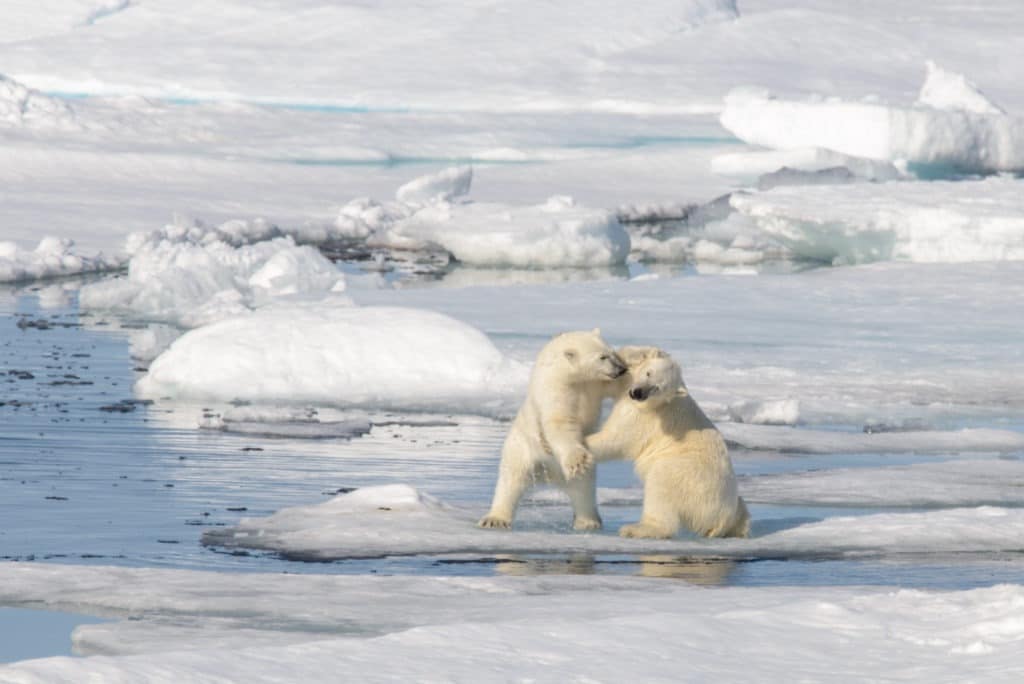
The fight is unlikely to be prolonged due to the overwhelming strength of both combatants, so the differences in stamina are unlikely to be the deciding factor anyway.
Detection of the Enemy of a Siberian Tiger and Polar Bear
Both of our combatants are good at detecting a possible threat.
The tiger’s eyesight is comparable to humans during the day and far better during the night.
They have wider prey diversity and use their sight for hunting.
Polar bears have excellent vision comparable to tigers but a slightly less capable night vision.
With regard to detection by smell, polar bears are much better and can detect their prey’s smell at a distance of 4,921 feet (1500 meters).
Tigers have a poorer sense of smell due to lesser receptors and a reduced olfactory region (smell sensing center of the brain), but still, it is better than humans.
Who Wins in a Fight Between a Siberian Tiger and a Polar Bear?
After a detailed discussion of the strengths and abilities of the Siberian tiger and polar bear, it is at least clear that neither of the combatants can safely avoid the fight, and it ought to be a deadly one given their aggressive tendencies.
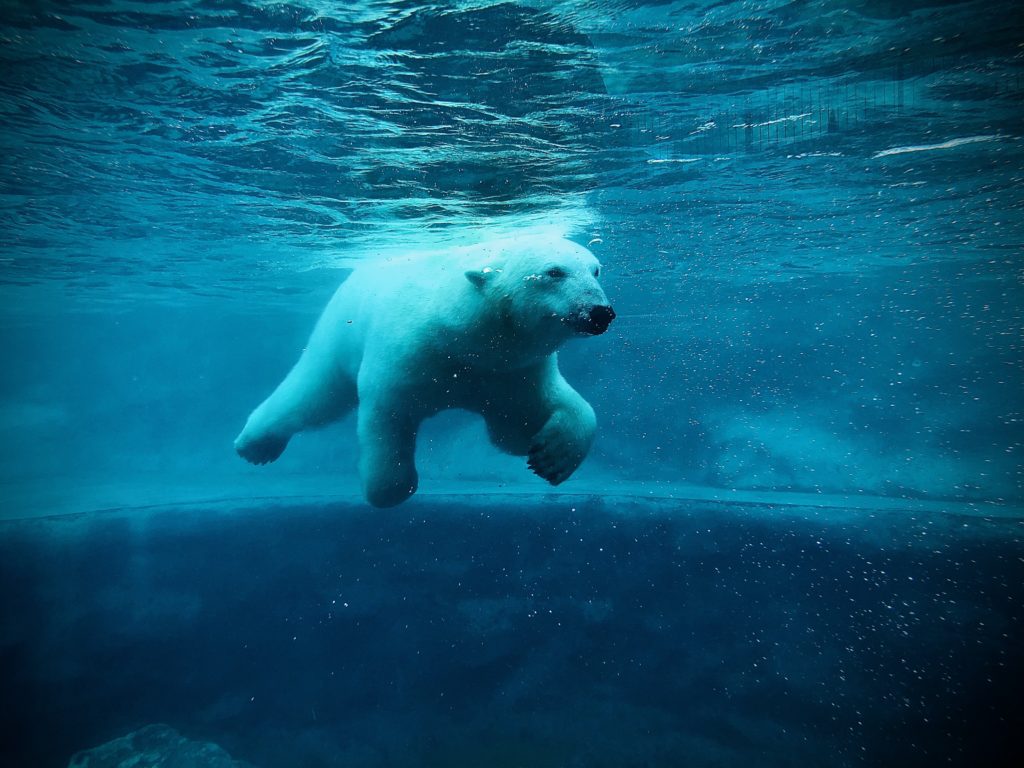
In power, jaw strength, and skin thickness, the bear is at an advantage.
But in speed, maneuverability, hunting experience, and behavior, the tiger is the best of them.
Both can swim, detect each other, and are at the top of their respective food chain.
The tiger would likely be at a slight advantage in a fight between a polar bear and a Siberian tiger.
Thanks to its superior attack strength and versatility, the Siberian tiger will emerge victoriously, but it would be close.
It also depends upon the fight’s location as the tiger is advantageous at the land, and the bear is better in water.
When all is said and done, this fight could go either way and will be almost entirely decided by whosoever has the home-field advantage.
